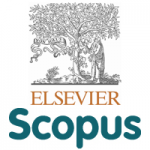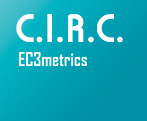El «Libro quinto de las prosas y versos del Arcadia» de Lope de Vega: una apoteosis emblemática sin imágenes
Resumen
ABSTRACT: Recourse to emblematic expressive modes is a constant throughout the literary production of Lope de Vega. His pastoral romance Arcadia, especially, occupies a privileged position with regards to allusions and references to emblems, imprese and hieroglyphics (hieroglíficas), as Lope calls them on several occasions. In this respect, the end of the «Fifth Book of the Arcadia» constitutes an authentic emblematic construction with its description of twenty-one imprese painted on tablets in the Temple of Disillusionment (Templo del Desengaño), described by shepherds and shepherdesses on the occasion of an amorous disappointment endured in the course of their lives. This study analyzes the origin of those imprese and seeks to discern the different narrative, autobiographical, polemical and aesthetic functions that can accrue to this extremely long ekphrasis that concludes in an original manner a romance in which Lope included many elements not only from his own life, but also from that of his protector, the Fifth Duke of Alba. Finally, this homage to the cultural transcendence of Víctor Infantes de Miguel ends with a brief allusion to the pictographic seventeenth century vanitas titled «Et in Arcadia ego», by Giovanni Francesco Barbieri and Nicolás Poussin.
KEYWORDS: Víctor Infantes; Arcadia; Lope De Vega; Emblematics; Narrative Function.
RESUMEN: El recurso a los medios expresivos emblemáticos es una constante en toda la obra de Lope de Vega. La novela pastoril Arcadia, particularmente, ocupa un lugar privilegiado por lo que se refiere a las alusiones y referencias a emblemas, empresas y hieroglíficas según la misma palabra utilizada varias veces por Lope. En este aspecto, el fin del «Libro Quinto del Arcadia» constituye una auténtica construcción emblemática con la descripción de veintiuna empresas pintadas en tablas, en el Templo del Desengaño, por pastores y pastoras con motivo de un desengaño amoroso sufrido en su vida. El estudio examina el origen de aquellas empresas y trata de discernir las diferentes funciones narrativas, autobiográficas, polémicas y estéticas que pueda adquirir esta larguísima ekphrasis que termina de manera original una novela en la cual Lope puso muchos elementos tanto de su propia vida como de la vida de su protector, el Quinto Duque de Alba. Finalmente, una rápida alusión a las vanitas pictográficas del siglo XVII, tituladas «Et in Arcadia ego», de Giovanni Francesco Barbieri y Nicolás Poussin cierra este homenaje a la trascendencia cultural de Víctor Infantes de Miguel.
PALABRAS CLAVES: Víctor Infantes; Arcadia; Lope De Vega; emblemática; función narrativa.
KEYWORDS: Víctor Infantes; Arcadia; Lope De Vega; Emblematics; Narrative Function.
RESUMEN: El recurso a los medios expresivos emblemáticos es una constante en toda la obra de Lope de Vega. La novela pastoril Arcadia, particularmente, ocupa un lugar privilegiado por lo que se refiere a las alusiones y referencias a emblemas, empresas y hieroglíficas según la misma palabra utilizada varias veces por Lope. En este aspecto, el fin del «Libro Quinto del Arcadia» constituye una auténtica construcción emblemática con la descripción de veintiuna empresas pintadas en tablas, en el Templo del Desengaño, por pastores y pastoras con motivo de un desengaño amoroso sufrido en su vida. El estudio examina el origen de aquellas empresas y trata de discernir las diferentes funciones narrativas, autobiográficas, polémicas y estéticas que pueda adquirir esta larguísima ekphrasis que termina de manera original una novela en la cual Lope puso muchos elementos tanto de su propia vida como de la vida de su protector, el Quinto Duque de Alba. Finalmente, una rápida alusión a las vanitas pictográficas del siglo XVII, tituladas «Et in Arcadia ego», de Giovanni Francesco Barbieri y Nicolás Poussin cierra este homenaje a la trascendencia cultural de Víctor Infantes de Miguel.
PALABRAS CLAVES: Víctor Infantes; Arcadia; Lope De Vega; emblemática; función narrativa.
Palabras clave
Víctor Infantes, Arcadia, Lope De Vega, emblemática, función narrativa
Texto completo:
PDFEnlaces refback
- No hay ningún enlace refback.
URL: http://ojs.uv.es/index.php/IMAGO
Administración: C/ Universitat, 2 · 46003 Valencia.
M.Elvira.Mocholi@uv.es, Elena.Monzon@uv.es, mahiques@uv.es
ISSN digital: 2254-9633 / ISSN impresión: 2171-0147
MÉTRICA EN SJR BASADA EN SCOPUS
INDEXACIÓN






![]()







